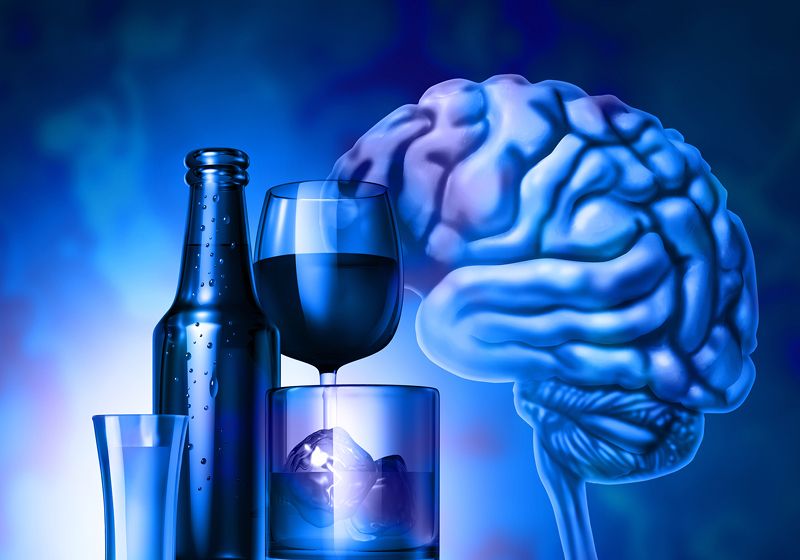Candida albicans influences the response to alcohol through a prostaglandin.
Researchers increasingly recognize the role of the gut microbiome in influencing activity in the brain, coined the “gut-brain axis”. For example, these microbes influence addiction, including alcohol use disorder (AUD).1,2 However, much of this work focuses on only part of the microflora—bacteria—leaving the influence of fungi unclear.
Candida albicans is a common gut fungus. Researchers previously showed that this fungus is also more abundant in the fecal microbiome of people with AUD.3 Yet the effects of C. albicans on an individual’s preference for and consumption of alcohol remain under explored.
A team of researchers at Tufts University led by Carol Kumamoto, a microbiologist studying C. albicans growth and infections, investigated this topic. They showed that C. albicans increases the amount of an inflammatory marker in the circulation in mice that reduced the animals’ desire for alcohol.4 The findings, published in mBio, offer insights into the development of AUD and potential new treatment strategies.
Carol Kumamoto’s team explored how Candida albicans influences alcohol preference in mice.
Anna Miller, Tufts University
“Our bodies are wired so that our behavior responds to gut microbiota, and this study highlights that fungi are important components of the gut-brain axis,” Kumamoto said in a press release.
The team colonized mice with C. albicans or left them uncolonized and gave both groups access to water and alcohol. They saw that colonized mice consumed less alcohol over a two-day period.
Previous studies found that C. albicans increased levels of prostaglandin E2 (PGE2), a hormone-like compound that mediates immune responses.5 Further work showed that this compound decreased the amount of ethanol rats ingested. 6 So, in this study, the Kumamoto’s team investigated the role of PGE2 in regulating alcohol consumption in C. albicans-colonized mice.
They observed that after injecting a derivative of PGE2 into non-colonized mice, their ethanol consumption decreased. To further explore the relationship between PGE2 and alcohol preference, the researchers injected fungus-colonized and non-colonized mice with an antagonist to two PGE2 receptors. While this treatment did not influence alcohol use in non-colonized mice, mice colonized with C. albicans drank more alcohol when PGE2 was blocked.
To determine how PGE2 may influence alcohol preference in the brain, the team assessed gene expression changes in the PGE2 receptors and two dopamine receptors in areas responsible for habit formation and addiction. The amount of circulating PGE2 correlated with the expression of its receptors in the brain only in C. albicans colonized mice. While C. albicans colonized mice expressed fewer dopamine receptor genes compared to mock colonized mice, the researchers also observed that colonized mice that drank less alcohol expressed more of a dopamine receptor responsible for forming aversions.
Finally, the researchers sought to determine whether C. albicans made mice more sensitive to behavioral effects of alcohol. The researchers injected the animals with ethanol and observed that C. albicans colonized mice displayed more depressant behavior and reduced reflexes and motor control. To determine whether PGE2 influenced these effects, the team repeated the studies to include administration of the receptor antagonists. They observed that animals with blocked PGE2 showed improved coordination compared to those treated with alcohol and a vehicle control.
The researchers concluded that C. albicans can in fact influence alcohol consumption and the effects of ethanol in animals. These effects appear to be mediated through PGE2, offering new strategies to tackle AUD.

